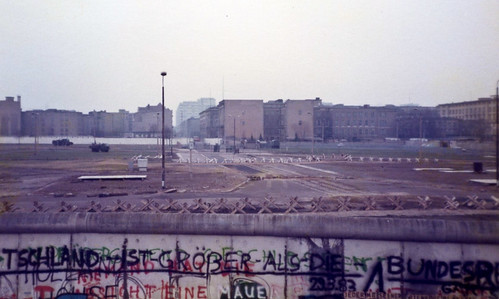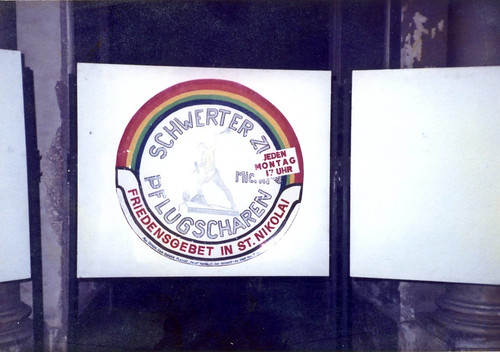by Corey Robin on November 9, 2014
In the post just before me, Chris writes:
Yesterday I was listening to BBC Radio 4, and they were remembering the people who died, shot by East German border guards. It doesn’t seem to occur to our official voices of commemoration that there are parallels today with the thousands who die trying to escape tyranny, war or poverty and who drown in the Mediterranean, perish from thirst in the Arizona desert, or with those who the Australian government turns back at sea or interns offshore.
He’s right. Years ago, I reviewed two books on migration, immigration, and exile—one by Caroline Moorehead, the other by Seyla Benhabib—for The Nation. Here’s a factoid from that review:
Between 1994 and 2001, at least 1,700 migrants from Mexico died trying to reach the United States. Throughout its entire existence, by contrast, exactly 171 people died trying to cross the Berlin wall.
And that, mind you, was under the Clinton regime, before the last decade and a half of agitation around the extension and elaboration of a security wall between Mexico and the United States.
And just in case anyone missed the parallels between the Berlin Wall and the separation wall in Israel, Palestinian activists are on the case (not that anyone in the Western media noticed them, as Chris notes). [click to continue…]
by Chris Bertram on November 9, 2014
Yesterday I was listening to BBC Radio 4, and they were remembering the people who died, shot by East German border guards. It doesn’t seem to occur to our official voices of commemoration that there are parallels today with the thousands who die trying to escape tyranny, war or poverty and who drown in the Mediterranean, perish from thirst in the Arizona desert, or with those who the Australian government turns back at sea or interns offshore. Nor do such barriers as the “separation wall” in Palestine seem to evoke such horror in those voices as the Berlin Wall did then. These newer barriers are treated as necessary and normal and those deaths as self-inflicted by people naive enough to believe that a better life awaits in prosperous liberal democracies. Not that free movement is the only thing where official attitudes have changed. It isn’t long since the comprehensive surveillance of citizens depicted in Anna Funder’s *Stasiland* and in the film *Das Leben der Anderen* was emblematic of how communist states would trample on the inalienable rights of people in pursuit of state security. Today we know that our states do the same. I’m not making the argument that Western liberal democracies are “as bad” as those states were, lest any commenter come along and moan about “moral equivalence”. But I note that these kinds of violations were not seen back then as being impermissible because those states were so bad in other ways — undemocratic, dirigiste — but rather were portrayed to exemplify exactly why those regimes were unacceptable.
Here’s my photoblog from five years ago:


Two photos today. My partner, Pauline Powell and I visited East Germany and West Berlin in 1984. The first picture is a shot of the Berlin Wall from the western side, and seems appropriate as tomorrow is the 20th anniversary of its fall. The second shot, taken inside the Nikolaikirche in Leipzig, announces one of the prayers for peace meetings that helped to build the popular movement that would eventually contribute to the fall of the regime. Both pictures are Pauline’s, not mine (all rights reserved etc). We believe the swords into ploughshares picture is unique on the web, though perhaps others exist as prints. As such, it is something of a historic document.

